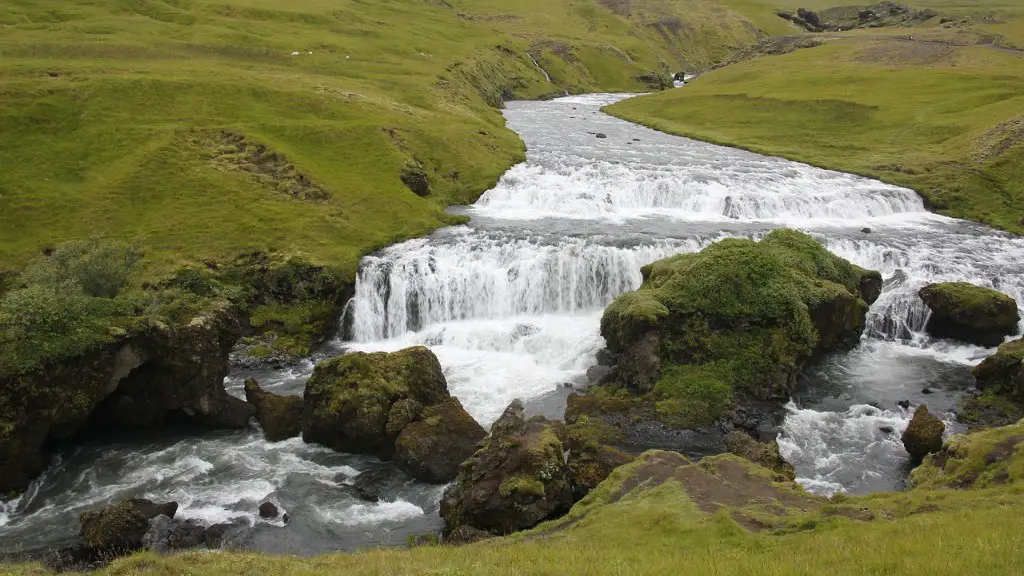Background Information
The Yangtze River dolphin, also known as the baiji, was a freshwater dolphin found only in the Yangtze River of China. It is believed to have been the first species of freshwater dolphin to have gone extinct due to human activities. The Yangtze River dolphin had lived in the Yangtze River for millions of years and was an icon of the region. Unfortunately, over the past decades, its population dwindled to the point of extinction. The yangtze river dolphin was declared extinct in 2006, due to rampant over fishing, water pollution and the development of dams along the river.
Decline of Population
The decline of the Yangtze River dolphin population has been well documented since the 1940s. Initially, their numbers still remained high, but as fishing and pollution affected the river and its inhabitants, the population started to decline. In the 1975, the Chinese government began efforts to conserve the Yangtze River dolphins, and the baiji sanctuary was created the same year. Despite these efforts, the population continued to decline and in the mid-1990s, only 200 individual dolphins remained.
Reasons for Extinction
The primary reason for the extinction of the Yangtze River dolphin was human activities such as over fishing, pollution and development of dams in the region. Over fishing depleted the population of the species’ food source and made it increasingly difficult for the dolphins to survive. Pollution of the river further reduced the quality of the water, making it an unfavorable environment for the dolphins to live in. Additionally, the construction of dams along access routes and the increased speed of boat traffic, significantly reduced the dolphin’s chances of survival.
Experts’ Perspectives
According to experts, the extinction of the Yangtze River dolphin could have been prevented if appropriate measures had been taken to conserve and protect the species. Conservationists have been calling for stricter regulations on fishing, more stringent pollution controls and restrictions on boat traffic in the Yangtze River. Had these measures been implemented in a timely manner, the Yangtze River dolphin may have been able to survive. Unfortunately, due to the lack of awareness and lax regulations, the Yangtze River dolphin became extinct.
Analysis and Insights
The extinction of the Yangtze River dolphin is a clear example of the devastating effects of human activities on the environment. The loss of this species highlights the need for more stringent regulations and conservation efforts to prevent the extinction of other species. This can be achieved by educating more people about the importance of conservation and protecting the environment. It is also important for people to be more aware of the environmental impact of their actions and to make conscious efforts to reduce their carbon footprint.
Solutions
The first step in preventing the extinction of other species is to protect the habitats of endangered animals and plants. Governments and organizations should create more wildlife sanctuaries to preserve the habitats of animals and other species. Additionally, stricter regulations on fishing and pollution should be implemented to ensure that the habitats of these species remain undisturbed. Furthermore, initiatives to increase public awareness should be taken to educate people on the importance of conservation.
Projects
In order to conserve vulnerable species, many organizations and conservationists have taken up numerous projects. These include reintroducing species lost due to human activities, creating nurseries and breeding centers for endangered species, and establishing research centers and databases to store relevant data on endangered species. Organizations have also been actively involved in promoting sustainable fishing and eco-tourism to increase awareness and sensitize people to the importance of conservation.
Technology
Technology has also been playing an increasingly important role in conservation. With advances in technology, conservationists can now track the movements of species, use drones for aerial surveys, home camera traps to monitor habitats and satellite imaging to detect changes in species habitats. Additionally, artificial intelligence and machine learning are being used to create innovative solutions for conservation.
Funding
Another key challenge for conservationists is securing adequate funding for their projects. Funding is essential for research and development, building awareness and educating people on conservation. Many organizations are trying to create sustainable sources of financing for their projects, such as setting up funds and seeking donations from the public. Additionally, private and governmental funds are being allocated to such projects to ensure that they continue to be successful.


